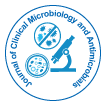

Perspective - (2023)Volume 7, Issue 4
Whooping cough, or pertussis, is a highly contagious respiratory infection caused by the bacterium Bordetella pertussis. This bacterial infection primarily affects the respiratory system, leading to severe coughing fits, and it can be particularly dangerous for infants and young children. While vaccination remains the primary strategy for preventing whooping cough, timely and appropriate treatment is crucial for those who do contract the illness.
Understanding whooping cough
It is characterized by several stages, including an initial catarrhal stage with mild cold-like symptoms, followed by the paroxysmal stage marked by severe coughing fits, often accompanied by the characteristic "whoop" sound as individuals gasp for breath. The recovery stage follows, but the entire course of the illness can last for weeks.
Importance of timely treatment
Early and appropriate treatment of whooping cough is essential, especially in infants and young children, to minimize the severity of symptoms, reduce complications, and prevent the spread of the disease to others. Macrolide antibiotics, such as azithromycin, clarithromycin, and erythromycin, have been commonly used for the treatment of whooping cough.
Whooping cough treatment
Bacteriostatic action: Macrolides exert their therapeutic effect by inhibiting bacterial protein synthesis, which is crucial for the replication and survival of Bordetella pertussis.
By acting as bacteriostatic agents, macrolides impede the growth of the bacteria, allowing the body's immune system to effectively eliminate the infection.
Reducing severity and duration of symptoms: Early administration of macrolides, particularly during the catarrhal stage or early paroxysmal stage, has been associated with a reduction in the severity and duration of coughing fits.
While macrolides may not fully eliminate the symptoms, they can help control the spread of the bacteria and limit the impact of the illness.
Treatment of contacts and preventing transmission: Macrolides are also used prophylactically to treat close contacts of individuals diagnosed with whooping cough, even if they are asymptomatic.
Administering macrolides to contacts helps prevent the spread of the bacteria, especially in households and communities, where the disease can easily be transmitted.
Considerations in macrolide use
Timing of treatment: Early initiation of macrolide treatment is crucial for optimal effectiveness. The catarrhal stage, when symptoms mimic a common cold, is an opportune time for intervention.
Delayed treatment during the paroxysmal stage may still be beneficial but may not have as pronounced an effect on symptom severity.
Age-specific considerations: Macrolides are considered safe and effective for the treatment of whooping cough in infants, children, and adults.
In the case of infants, particularly those under the age of six months, hospitalization may be necessary due to the risk of severe complications.
Individualized treatment plans
Healthcare providers determine the appropriate macrolide, dosage, and duration of treatment based on factors such as the patient's age, overall health, and the presence of any allergies or contraindications.
Azithromycin is often preferred due to its convenient dosing regimen and fewer gastrointestinal side effects compared to erythromycin.
Preventing resistance: The emergence of antibiotic resistance is a concern, emphasizing the importance of prudent antibiotic use.
Macrolides should be prescribed based on clinical need, and the full prescribed course should be completed to prevent the development of resistance.
Combination therapy: In certain cases, especially in severe or complicated infections, healthcare providers may consider a combination of antibiotics.
Combining macrolides with other antibiotics may enhance the bactericidal effects and improve outcomes, particularly in individuals with underlying health conditions.
Challenges and considerations
Diagnostic challenges: It will be difficult to diagnose whooping cough, especially in the early stages when symptoms may resemble those of other respiratory infections.
Timely diagnosis through laboratory testing is crucial to initiate prompt treatment.
Vaccination as a preventive measure: The most effective strategy for preventing whooping cough is vaccination. Routine childhood immunization, which includes the DTaP (Diphtheria, Tetanus, and acellular Pertussis) vaccine, has significantly reduced the incidence and severity of the disease.
Boosters, such as the Tdap (Tetanus, Diphtheria, and acellular Pertussis) vaccine for adolescents and adults, help maintain immunity.
Duration of infectivity: Infected individuals are most contagious during the early stages of the illness. Once macrolide treatment is initiated, the duration of infectivity is significantly reduced.
Isolation precautions, especially in healthcare settings and households with vulnerable individuals, remain crucial.
Macrolides have proven to be valuable in the treatment of whooping cough, offering a means to reduce the severity of symptoms, limit transmission, and prevent complications, particularly in infants and young children. However, their effectiveness is contingent on early intervention and adherence to prescribed treatment regimens. Vaccination remains the primary and most effective strategy for preventing whooping cough, emphasizing the importance of routine immunization to protect individuals and communities from this potentially severe respiratory infection. As with any antibiotic use, responsible and judicious prescribing practices are essential to mitigate the risk of antibiotic resistance and preserve the effectiveness of these medications in the long term.
Citation: Parsons C (2023) Role of Macrolides in the Treatment of Whooping Cough. J Clin Microbiol Antimicrob. 7:174.
Received: 13-Nov-2023, Manuscript No. JCMA-23-28705; Editor assigned: 16-Nov-2023, Pre QC No. JCMA-23-28705 (PQ); Reviewed: 01-Dec-2023, QC No. JCMA-23-28705; Revised: 08-Dec-2023, Manuscript No. JCMA-23-28705 (R); Published: 15-Dec-2023 , DOI: 10.35248/jcma.23.7.174
Copyright: © 2023 Parsons C. This is an open-access article distributed under the terms of the Creative Commons Attribution License, which permits unrestricted use, distribution, and reproduction in any medium, provided the original author and source are credited.